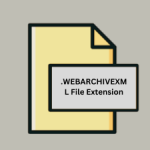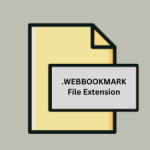.DAP File Extension

What is an DAP file?
A .DAP (Access Data Access Page) file is a type of file format used by Microsoft Access, a relational database management system. It is specifically designed to allow users to create web-based forms and reports that can interact with data stored in an Access database.
More Information.
The initial purpose of .DAP files was to provide a way for Access users to create simple web interfaces for interacting with their databases. This allowed for the creation of basic forms and reports that could be accessed via a web browser, without requiring users to have Access installed on their local machine.
Origin Of This File.
The .DAP file format originated with Microsoft Access, which was first released in 1992 as a part of the Microsoft Office suite. As web technologies evolved, Microsoft introduced the capability to create data access pages within Access, which could then be published to the web for users to interact with.
File Structure Technical Specification.
.DAP files are essentially HTML pages with embedded scripts and ActiveX controls that allow them to interact with Access databases. They typically include a combination of HTML, JavaScript, and ActiveX controls that provide the necessary functionality for querying and displaying data from an Access database.
How to Convert the File?
Windows:
- Open Microsoft Access on your Windows computer.
- Navigate to the .DAP file you want to convert.
- Open the .DAP file in Microsoft Access.
- Once the file is open, you can export the data to a different format by selecting the “Export” option from the menu.
- Choose the desired file format for conversion, such as Excel or CSV.
- Follow the prompts to complete the export process.
- The file will be converted to the selected format and saved to your desired location on your Windows computer.
Linux:
- Install Wine, a compatibility layer that allows running Windows applications on Linux.
- Download and install Microsoft Access using Wine.
- Open Microsoft Access within Wine.
- Follow the same steps as outlined in the Windows conversion process to open and convert the .DAP file.
- Once converted, the file can be saved in a compatible format accessible on Linux, such as CSV or Excel.
Mac:
- Install Parallels Desktop or VMware Fusion, which are virtualization software that allows running Windows on a Mac.
- Set up a Windows virtual machine within Parallels Desktop or VMware Fusion.
- Install Microsoft Access within the Windows virtual machine.
- Follow the same steps as outlined in the Windows conversion process to open and convert the .DAP file.
- Once converted, the file can be saved in a compatible format accessible on macOS, such as CSV or Excel.
Android:
Converting .DAP files on Android devices can be challenging due to compatibility issues with ActiveX controls.
However, you can potentially convert the file by following these steps:
- Transfer the .DAP file to a Windows computer or virtual machine.
- Follow the steps outlined in the Windows conversion process to convert the file to a compatible format, such as CSV or Excel.
- Transfer the converted file back to your Android device for access and use.
iOS:
Converting .DAP files on iOS devices is also challenging due to compatibility issues with ActiveX controls. However, you can potentially convert the file by following these steps:
- Transfer the .DAP file to a Windows computer or virtual machine.
- Follow the steps outlined in the Windows conversion process to convert the file to a compatible format, such as CSV or Excel.
- Transfer the converted file to your iOS device using cloud storage or a file transfer method supported by iOS. You can then use apps that support the converted file format for viewing and editing.
Advantages And Disadvantages.
Advantages of .DAP files include:
- Ease of use: .DAP files can be created using the familiar interface of Microsoft Access, making it easy for users to create web-based forms and reports.
- Integration with Access: .DAP files can seamlessly interact with data stored in an Access database, allowing for real-time updates and queries.
- Accessibility: Since .DAP files are web-based, they can be accessed from any device with a web browser, making it easy for users to interact with data remotely.
Disadvantages of .DAP files include:
- Limited functionality: .DAP files are limited in terms of the types of forms and reports that can be created compared to more advanced web development technologies.
- Compatibility issues: .DAP files rely on ActiveX controls, which may not be supported in modern web browsers or on non-Windows platforms.
- Security concerns: .DAP files may pose security risks if they are not properly configured to prevent unauthorized access to the underlying database.
How to Open DAP?
Open In Windows
.DAP files can be opened in Windows using Microsoft Access or any web browser.
Open In Linux
.DAP files may not be easily opened in Linux due to compatibility issues with ActiveX controls. However, they can potentially be opened using a virtual machine or compatibility layer such as Wine.
Open In MAC
.DAP files may not be easily opened in macOS due to compatibility issues with ActiveX controls. However, they can potentially be opened using a virtual machine or compatibility layer such as Wine.
Open In Android
.DAP files can be opened on Android devices using a web browser that supports ActiveX controls, though this may require additional configuration or the use of a third-party browser.
Open In IOS
.DAP files may not be easily opened on iOS devices due to compatibility issues with ActiveX controls. However, they can potentially be opened using a virtual machine or compatibility layer.
Open in Others
.DAP files may not be easily opened in other operating systems or platforms due to compatibility issues with ActiveX controls. However, they can potentially be opened using a virtual machine or compatibility layer, or by converting the file to a more widely supported format.













